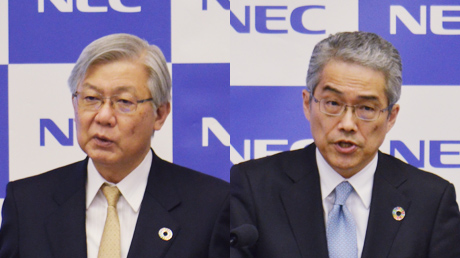EC Refs Whistle Qualcomm-NXP Deal
The European Commission Friday (June 9) threw down a gauntlet by officially opening an in-depth investigation into the proposed acquisition of NXP by Qualcomm.
The move is a monkey wrench in the two chip companies’ merger, adding at least four months to the resolution process. The Commission has “until 17 October 2017, to take a decision” on this matter, according the EC.
It’s uncertain to judge the impact on the eventual merger. Qualcomm and NXP had announced expectations to close the deal at the end of 2017.
Since last October, when the Qualcomm-NXP union was revealed, a lot has happened.
Qualcomm, embroiled in lonely legal battles in different parts of the world, operates today in a very toxic business and legal environment. Qualcomm’s legal fights involve not only competitors but also with its own customers and customers’ customers. These disputes have left Qualcomm with very few allies in the industry.
A case in point is an upcoming FTC hearing in San Jose (scheduled on June 15). Both Intel and Samsung filed amicus briefs in support of the FTC’s complaint against Qualcomm.
The same goes for Europe.
Preliminary concerns raised by the Commission speak volumes about how the European industry views Qualcomm. The San Diego-based company has become a major concerns for the EC and Qualcomm’s rivals on the European market, due to its perceived anti-competitive behavior (“bundling or tying”) and the company’s hardball tactics over IP licensing practices (“increased royalties” and “exclusion of competitors”).
Three worries
Which specific areas of semiconductor technology and products did the Commission -- in initial investigations – find problematic in the Qualcomm/NXP merger?
The three areas over which the Commission raised a red flag are NFC, mobile devices and emerging V2X (vehicle-to-vehicle, vehicle-to-infrastructure) automotive technology.
Here’s what the Commission spelled out:
-The merged entity would hold strong market positions within both baseband chipsets and NFC/SEs chips, and would have the ability and incentive to exclude their rival suppliers from these markets through practices such as bundling or tying.
-The merged entity would have the ability and incentive to modify NXP's current intellectual property licensing practices, in particular in relation to NFC technology, including by bundling the acquired NFC intellectual property to Qualcomm's patent portfolio. The Commission will investigate whether such conduct could lead to anticompetitive effects, such as increased royalties for customers and/or exclusion of competitors
-The merger would remove competition between companies active in the markets for semiconductors used in the automotive sector and, in particular, in the emerging Vehicle-to-Everything ("V2X") technology, which will play an important role in the future development of "connected cars".
It’s unclear whether Qualcomm saw this EC backlash coming. It had until June 1 to propose concessions that might allay competition concerns about the NXP acquisition. Instead, the company oozed confident, banking on its ability to sell regulators on the proposition that the deal is not anti-competitive.
The EC clearly did not bite.
In April, relatively lenient antitrust forces in the U.S. cleared the Qualcomm-NXP merger without conditions. But now, on top of the EC’s in-depth investigation, Qualcomm faces negotiations with China’s Ministry of Commerce – historically the toughest refs in the global game.
在线留言询价
- 一周热料
- 紧缺物料秒杀
| 型号 | 品牌 | 询价 |
|---|---|---|
| BD71847AMWV-E2 | ROHM Semiconductor | |
| TL431ACLPR | Texas Instruments | |
| MC33074DR2G | onsemi | |
| RB751G-40T2R | ROHM Semiconductor | |
| CDZVT2R20B | ROHM Semiconductor |
| 型号 | 品牌 | 抢购 |
|---|---|---|
| STM32F429IGT6 | STMicroelectronics | |
| BP3621 | ROHM Semiconductor | |
| TPS63050YFFR | Texas Instruments | |
| BU33JA2MNVX-CTL | ROHM Semiconductor | |
| IPZ40N04S5L4R8ATMA1 | Infineon Technologies | |
| ESR03EZPJ151 | ROHM Semiconductor |
AMEYA360公众号二维码
识别二维码,即可关注

























